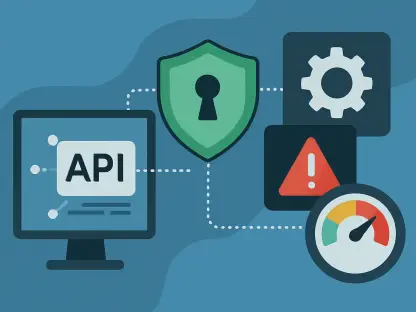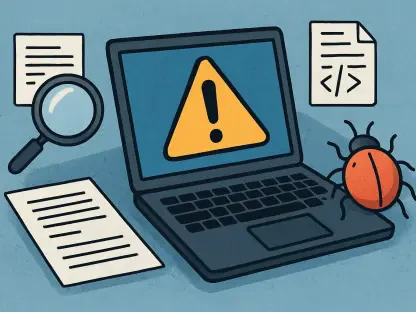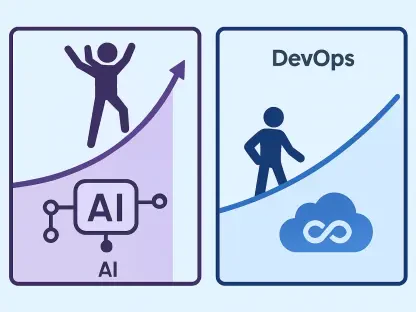Dive into the fascinating world of trust in artificial intelligence with Vijay Raina, our esteemed SaaS and Software expert. With a deep background in enterprise SaaS technology and thought leadership in software design and architecture, Vijay brings a unique perspective to the evolving relationship between users and AI systems. In this interview, we explore the psychological underpinnings of trust in AI, the challenges of designing ethical and reliable tools, and the strategies to foster user confidence. From personal experiences with AI to the ethical responsibilities of designers, Vijay offers insightful reflections on building systems that balance competence with transparency.
How has your experience with AI tools shaped your understanding of user trust in technology?
My journey with AI tools, from chatbots to complex recommendation systems, has shown me how critical trust is to user adoption. I’ve used virtual assistants for simple tasks like setting reminders, and I’ve worked with enterprise-grade AI for data analysis. What stands out is that when an AI tool performs consistently and aligns with my expectations, I’m more likely to rely on it. But a single failure—like a misinterpreted command or irrelevant output—can make me second-guess its value. Over time, I’ve realized that trust isn’t just about the tool working; it’s about feeling that it’s on my side and transparent about its limitations.
Can you share a memorable moment, good or bad, when an AI tool surprised you, and how it affected your perception of such systems?
Absolutely. A few years back, I was using a generative AI tool to draft content for a project. It produced a piece that was not only coherent but also creatively insightful, which blew me away. That moment made me see AI as a potential partner in ideation. On the flip side, I’ve had frustrating experiences where a virtual assistant completely misunderstood a critical request, sending a message to the wrong person. That error made me hesitant to use voice commands for anything urgent. These highs and lows taught me that trust in AI is fragile—one great experience builds it, but one bad one can shatter it.
When it comes to an AI’s ability to perform tasks accurately, what factors make you feel confident in its competence?
Competence for me boils down to consistency and relevance. If an AI tool, say a data analytics platform, consistently delivers accurate insights based on the input I provide, I start to trust its ability. For instance, when a tool correctly predicts trends based on historical data, I feel confident. But if it spits out irrelevant or incorrect results even once, like a chatbot giving outdated information, my confidence dips. I also look for signs of learning—if the tool adapts to my feedback, that’s a huge plus. It shows me it’s not just a static system but one that’s trying to get better.
How do you perceive an AI tool’s intent—do you ever feel it’s genuinely working in your best interest, or does it seem driven by other motives?
This is a tricky one. I’ve used navigation apps that suggest routes avoiding tolls, which feels like the AI is prioritizing my needs, and that builds a sense of benevolence. But I’ve also encountered recommendation systems that push sponsored content aggressively, making me question whose interest they’re really serving. When an AI’s actions seem tailored to my benefit—like personalized suggestions based on my history—I lean toward trusting its intent. But transparency is key. If I can’t tell why it’s suggesting something, I start to wonder if it’s more about a company’s bottom line than my needs.
Have you ever had concerns about AI impacting your role or job security, and what could designers do to address such fears?
I’ve definitely had moments of concern, especially when I see AI automating tasks that were once core to certain roles I’ve held, like data processing or customer support. It’s not just about replacement—it’s the uncertainty of how my expertise fits in. Designers can help by focusing on AI as a collaborator, not a substitute. For example, tools that augment my decision-making with insights rather than making decisions for me feel less threatening. Also, clear communication during onboarding about how the AI supports rather than replaces human skills would go a long way in easing those fears.
What are your thoughts on the ethical integrity of AI systems, especially when it comes to transparency and fairness in their design?
Ethics in AI is non-negotiable. I’ve seen systems that claim to be fair but lack transparency about how decisions are made, which erodes trust instantly. Integrity means the AI operates on clear, ethical principles—like openly stating how my data is used or admitting when it’s unsure about an output. I’ve encountered recruiting tools where biases in algorithms were later exposed, and that’s a breach of integrity. Designers need to prioritize fairness by involving diverse perspectives in development and ensuring the system’s limitations or potential biases are communicated upfront. Without that, trust is impossible.
How important is predictability in building trust with AI, and what design elements help create that sense of reliability for you?
Predictability is everything. If I can’t form a mental model of how an AI will behave, I’m constantly on edge. For instance, if I ask a question twice and get wildly different answers, I lose faith. Design elements like onboarding guides that set clear expectations about what the AI can and can’t do are invaluable. Tooltips or confidence scores—like an AI saying it’s only 60% sure about a suggestion—help me know when to double-check. Also, consistent behavior over time, like a chatbot maintaining the same tone and accuracy, builds a stable sense of reliability that’s crucial for trust.
What role do you think UX professionals play in preventing ‘trustwashing’—creating a false sense of trust in flawed AI systems?
UX professionals are the gatekeepers of user trust, and trustwashing is a real danger. We must advocate for genuine transparency, not just a polished interface that hides flaws. This means designing systems that openly admit limitations, like error rates or areas of uncertainty, rather than glossing over them with slick messaging. We need to push for rigorous testing and involve diverse user feedback to uncover biases or harms early. Our responsibility is to empower users with control and understanding, ensuring they trust the system because it’s truly reliable, not because we’ve manipulated their perception.
What’s your forecast for the future of trust in AI, especially as these systems become more integrated into our daily lives?
I’m cautiously optimistic about the future of trust in AI. As these systems become more embedded in daily life—from healthcare to education—there’s a growing awareness of the need for ethical design and transparency. I believe we’ll see more emphasis on explainability, where AI not only provides answers but also shows its reasoning in a human-friendly way. However, the challenge will be balancing innovation with accountability. If designers and developers prioritize calibrated trust—helping users understand both strengths and weaknesses—we can build a future where AI is seen as a trusted partner. But if trustwashing or unchecked biases persist, we risk widespread skepticism. The next decade will be pivotal in shaping that trajectory.









